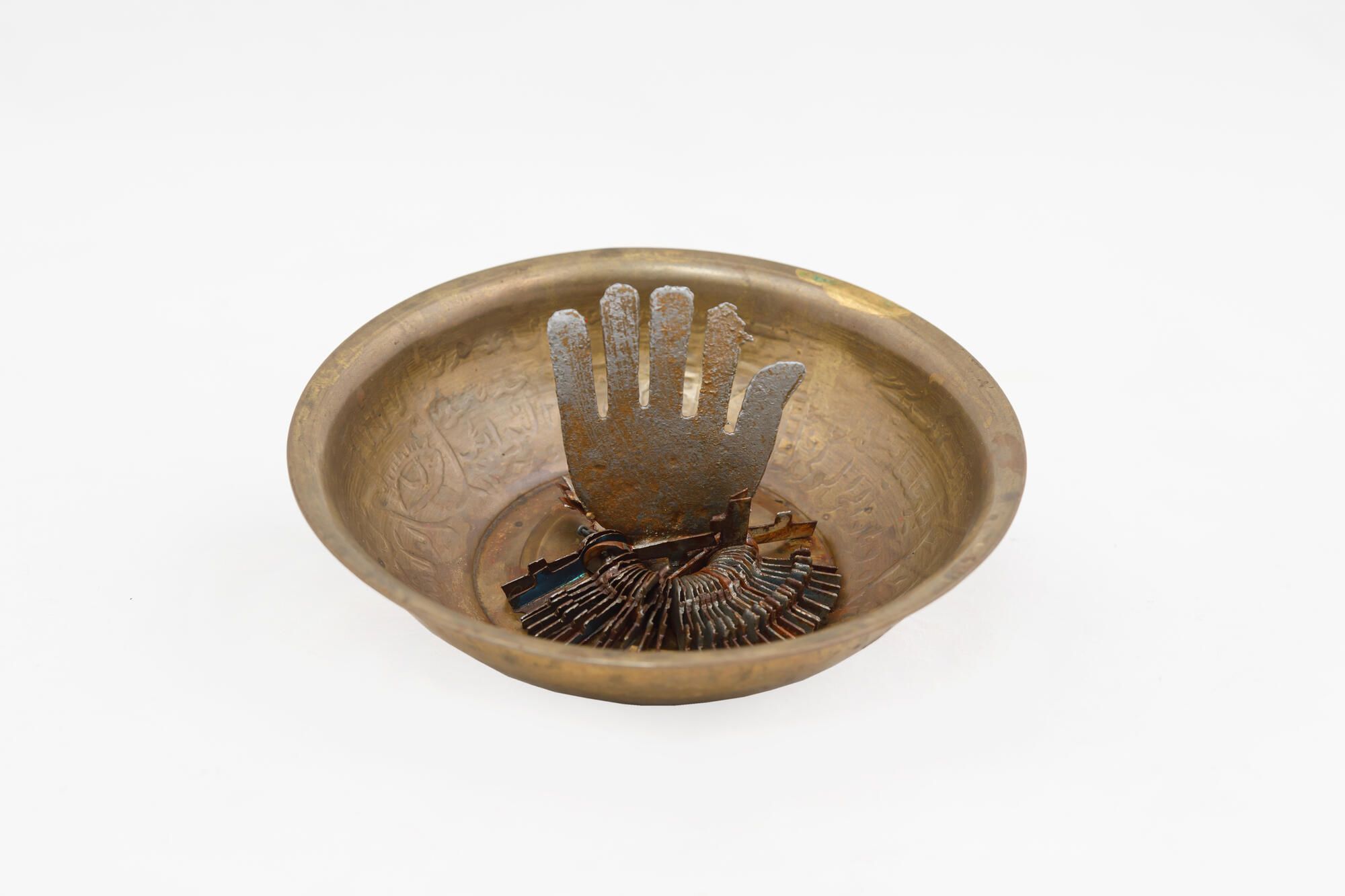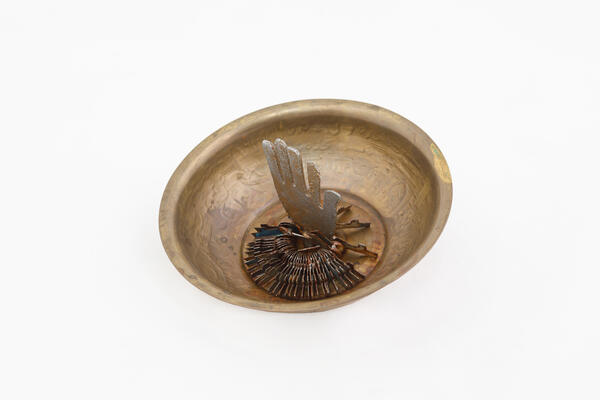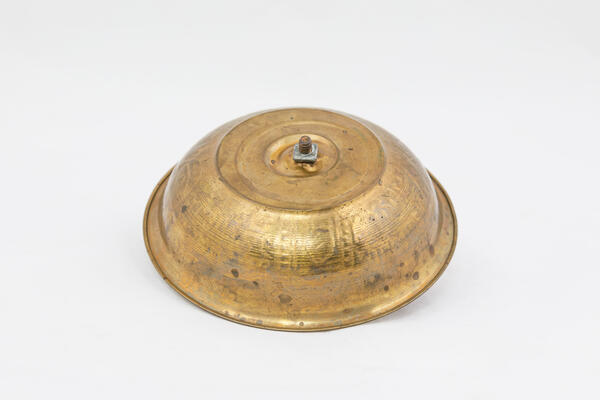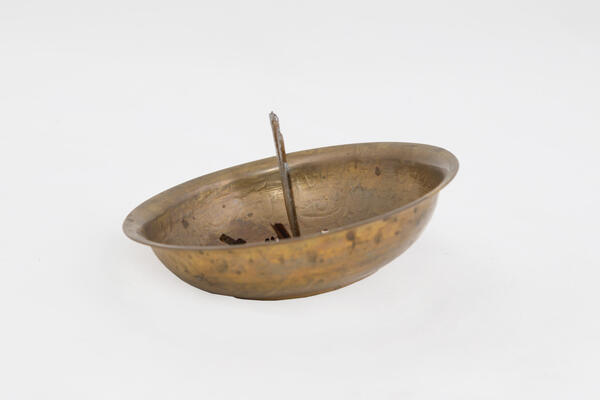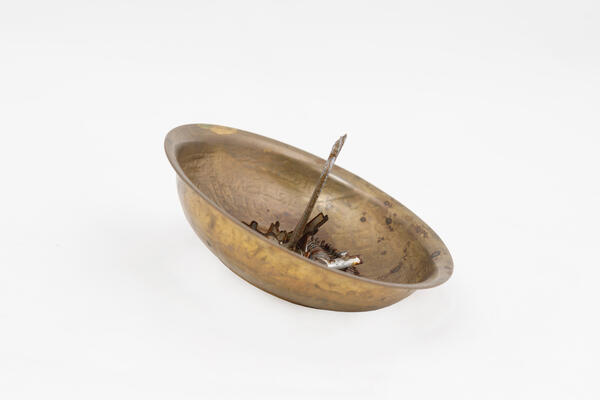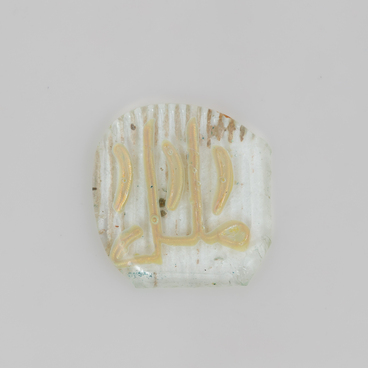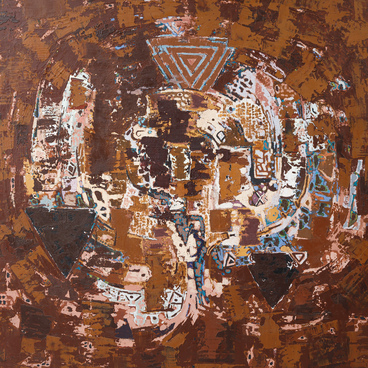A chilkalit is a ritual bowl used for magical rites by the peoples of Central Asia. The name of each bowl was related to its function, some were used in healing rites, others — in the rituals aimed at eliminating fright and nightmares. “Chilkalit” (or “chkyrh-achar-jam”) means “forty keys”. This bowl was used for healing a person and expelling evil spirits who took possession of them due to “evil eye”. The sacred texts at the bottom of the bowl endowed the water poured into it with sacred power, and the person who drank it was healed.
Forty small keys were attached to the holes around the edge of the vase, and sometimes they were made in the form of rectangular plates. The keys or plates had inscriptions of prayers from the Quran engraved on them. Keys and locks were witchcraft objects for the peoples of Central Asia. In contrast to the modern Russian tradition of padlocking for good luck, it was considered in mysticism a spoilage for the newlyweds. The number of “40” in the name of the bowl is also not accidental: as in many religions, it had a special power. There is a legend of the chiltans — forty inseparable spirits who had supernatural powers of providence and hid their existence from mere mortals. Chilaya refers to forty days after childbirth, during which the fate of the mother and the newborn child is decided, and chilkof is an ancient incantation against evil spirits.
In the middle of the bowl there is a hamsa, a palm amulet common among Muslims and Jews with different interpretations. For Jews, the hamsa symbolizes the palm of Prophet Moses’ sister Miriam and is used as an amulet against the evil eye. It can be found at the entrance to the house, in the car, on key chains, bracelets, and in the form of pendants. In Islam, the five fingers on the hand signify the family of Prophet Muhammad: Prophet Muhammad, Fatima Zahra, Imam Ali, Imam Hussein, and Imam Hassan. The hamsa amulet also symbolizes the five pillars of Islam: faith, fasting, hadj, prayer, and charity. The second name of the amulet associated with the legend of Fatima, the daughter of Prophet Muhammad, who learned of her husband’s adultery and his desire to marry a second time. Fatima was deeply shocked, but like a real Eastern wife, she silently endured her feelings and stirred the hot halva on the stove. Without noticing the spoon falling out of her hand, the woman continued to stir the red-hot delicacy with her hand. Fatima’s husband was struck by her restraint, so he decided to refuse a second marriage. This legend serves as a model of patience, faith and obedience.
Forty small keys were attached to the holes around the edge of the vase, and sometimes they were made in the form of rectangular plates. The keys or plates had inscriptions of prayers from the Quran engraved on them. Keys and locks were witchcraft objects for the peoples of Central Asia. In contrast to the modern Russian tradition of padlocking for good luck, it was considered in mysticism a spoilage for the newlyweds. The number of “40” in the name of the bowl is also not accidental: as in many religions, it had a special power. There is a legend of the chiltans — forty inseparable spirits who had supernatural powers of providence and hid their existence from mere mortals. Chilaya refers to forty days after childbirth, during which the fate of the mother and the newborn child is decided, and chilkof is an ancient incantation against evil spirits.
In the middle of the bowl there is a hamsa, a palm amulet common among Muslims and Jews with different interpretations. For Jews, the hamsa symbolizes the palm of Prophet Moses’ sister Miriam and is used as an amulet against the evil eye. It can be found at the entrance to the house, in the car, on key chains, bracelets, and in the form of pendants. In Islam, the five fingers on the hand signify the family of Prophet Muhammad: Prophet Muhammad, Fatima Zahra, Imam Ali, Imam Hussein, and Imam Hassan. The hamsa amulet also symbolizes the five pillars of Islam: faith, fasting, hadj, prayer, and charity. The second name of the amulet associated with the legend of Fatima, the daughter of Prophet Muhammad, who learned of her husband’s adultery and his desire to marry a second time. Fatima was deeply shocked, but like a real Eastern wife, she silently endured her feelings and stirred the hot halva on the stove. Without noticing the spoon falling out of her hand, the woman continued to stir the red-hot delicacy with her hand. Fatima’s husband was struck by her restraint, so he decided to refuse a second marriage. This legend serves as a model of patience, faith and obedience.
